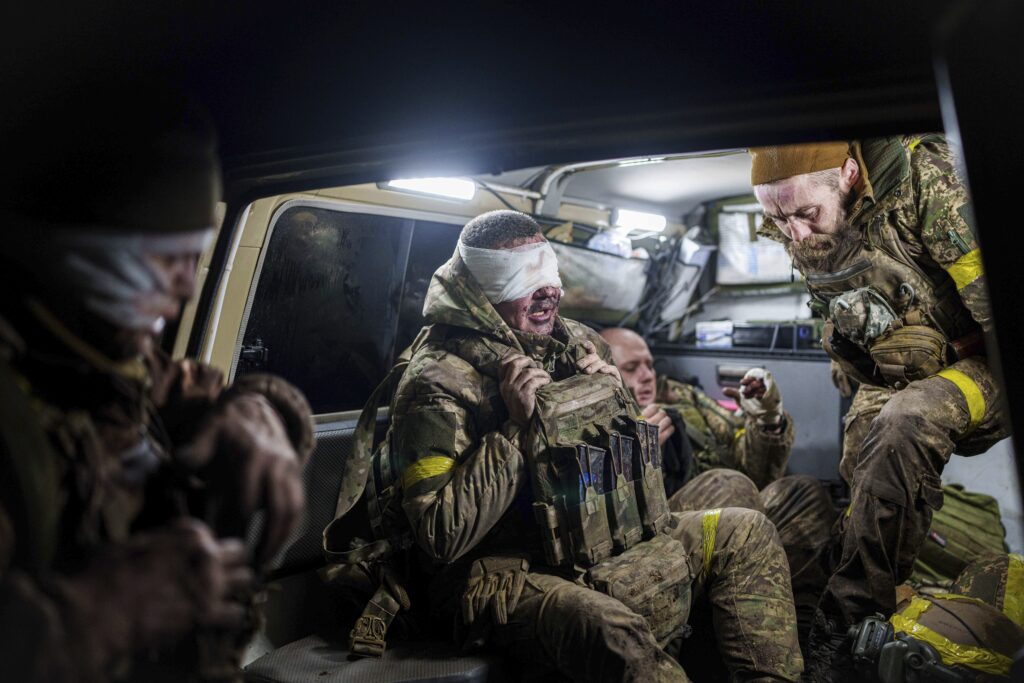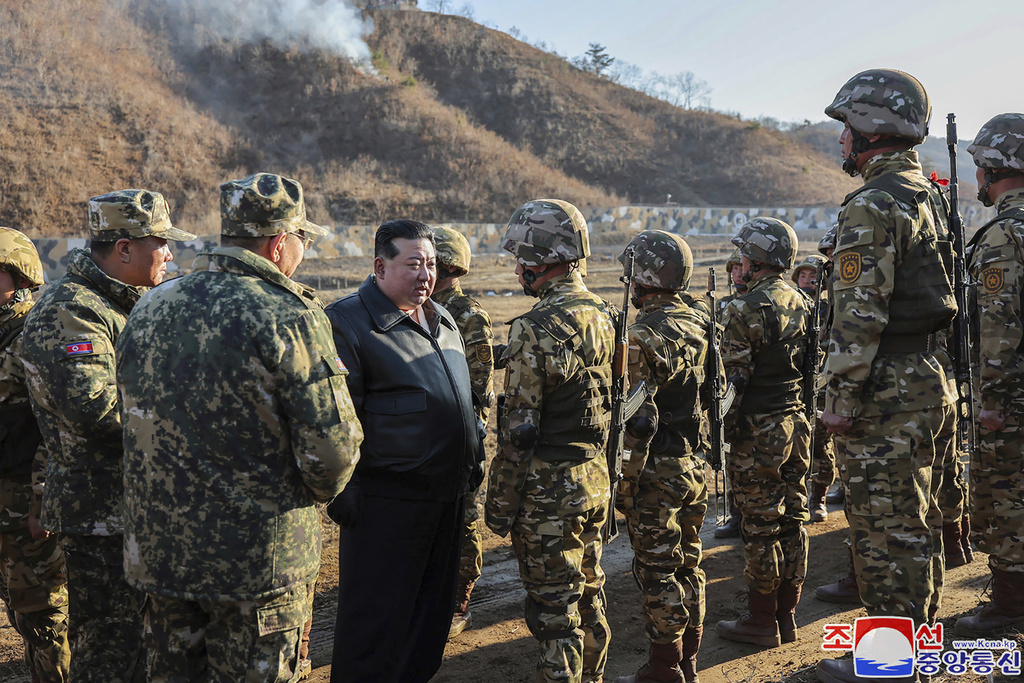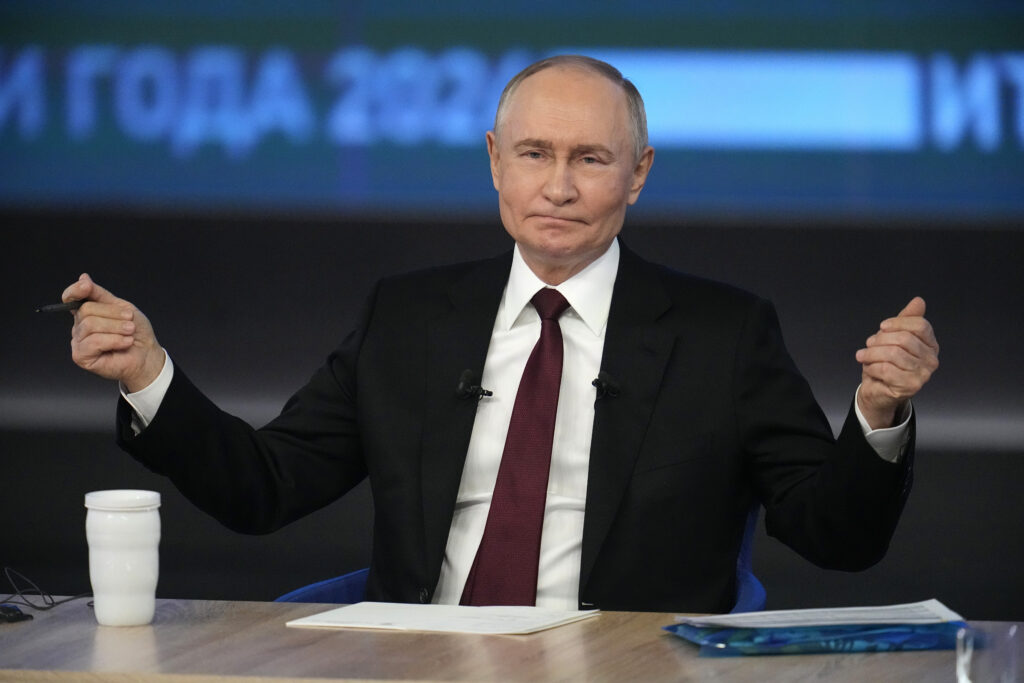Ukraine, in Surprise Move, Launches a Lightning Counter Attack Inside Russia’s Kursk Region
Putin, unable to dislodge Ukrainian forces from Russian territory, loses face in the lead-up to Trump’s inauguration.

Ukraine launched a surprise counterattack inside Russia’s Kursk region, the scene of the bloodiest recent fighting in the nearly three-year-long war. Today’s fighting comes five months after Ukrainian soldiers surprised the world by invading Russia, the first land invasion since World War II.
Today’s attack underlines how President Putin’s soldiers have proved incapable of dislodging the Ukrainians. Furthermore, Russia’s leader has also proved incapable of rallying his nation of 144 million people to sweep invaders out of a handkerchief of occupied land, now only 250 square miles. To compensate for Russian popular indifference to his war calls, Mr. Putin resorted last fall to importing 11,000 North Korean mercenaries to fight for Kursk.
This public loss of face comes as both sides race to maximize positions in advance of President-elect Trump’s inauguration two weeks from today. Mr. Trump has vowed to work to forge a lasting ceasefire between Russia and Ukraine. To do advance work, Mr. Trump’s special envoy to Ukraine, Keith Kellogg, is to visit Kyiv this week. Mr. Kellogg, a retired Army lieutenant general who served as a Green Beret in Vietnam and Cambodia, recently described the Russia-Ukraine war as one of “attrition.”
Interviewed last month on Fox Business, General Kellogg said that five times as many Russians are being killed or severely wounded as Ukrainians. Last Wednesday, the Ukrainian commander in chief, Oleksandr Syrskyi, said that Russia had lost 38,000 soldiers killed or severely wounded in Kursk since the August 6 invasion by Ukraine. If accurate, this would be one half of the approximately 70,000 Soviet soldiers killed and wounded in a decade in Afghanistan.

General Syrski, on a visit to bestow medals on fighters on the Kursk front, also said that Russia has lost in Kursk more than 1,000 pieces of equipment and 700 captured soldiers. One week ago, Russia and Ukraine exchanged 150 captured soldiers from each country. General Syrskyi has said that goals of the Kursk operation included preventing Russia from opening a second front, against northeastern Ukraine, and drawing Russian soldiers away from the 600-mile long front line in southeastern Ukraine.
A second front did not happen. Instead of deploying Russian soldiers, however, the Kremlin imported soldiers from North Korea. In the southeast last year, Ukraine lost control of 1,609 square miles, the Washington-based think tank Institute for the Study of War reported last week. Given that Ukraine’s land mass covers 233,062 square miles, this means that in one year of fighting, Russia has conquered seven-tenths of one percent of Ukraine.
Washington and London accept Ukraine’s official tally of Russian dead and seriously wounded. For the first 22 months of the war it was 360,010. In 2024, it was 430,790 for the entire year. This would mean that last year, the bloodiest year of the war, Russia lost 268 dead or wounded soldiers for each square mile conquered.
In Kursk, North Korean soldiers apparently are suffering similarly high casualty rates. On Saturday, President Zelensky, in his nightly address, told his nation that in battles on Friday and Saturday in Kursk, Russia “lost up to a battalion of infantry, including North Korean soldiers and Russian paratroopers.” A battalion can range from 300 to 1,200 soldiers.
Two weeks ago, Mr. Zelensky said that a total of 3,000 North Korean soldiers have been killed or wounded in Kursk. Not only are the North Koreans thrown into “meat assaults” by Russian commanders, but their severely wounded are often shot in the field to prevent capture.

America’s National Security Council spokesman, John Kirby, said December 27: “It’s clear that Russian and North Korean military leaders are treating these troops as expendable and ordering them on hopeless assaults against Ukrainian defenses.” In North Korea’s first major overseas military engagement, its troops have proved to be fatally unfamiliar with modern drone warfare.
According to a diary recovered from a dead North Korean soldier, their anti-drone strategy is to place one soldier out in the open as a “lure.” Two other soldiers take positions to shoot down the drone. By contrast, Russian soldiers train, via skeet shooting, to learn how to hit a fast moving target in the air. North Korean soldiers “don’t understand drones — and that’s to our advantage,” the deputy commander of Ukraine’s 36th Marine Brigade drone systems battalion said Friday night on national TV.
Today’s thrust into Kursk is the largest attack since August, Ukrainian military bloggers say. Russian military bloggers complain that this time Ukrainians moved with sophisticated anti-drone electronic warfare equipment. The only Russian drones that are functioning properly are attached to fiber-optic cables. Shorn of aerial reconnaissance, Russian commanders are resorting to hand-held binoculars.

The Ukrainians are attacking Berdin and another village about 15 miles northeast of Sudzha, a Kursk district capital they have held since mid-August. In response, Russian air force and artillery are carpet bombing this small Russian city, Ukrainian military bloggers say. Russia’s Defense Ministry claimed yesterday that the attackers are being beaten back. By nightfall Ukraine’s general staff said that 42 firefights took place Sunday in Kursk. Ukrainian officials were gleeful.
At President Putin’s marathon annual press conference on December 19, the Russian leader took a question from a Kursk resident about when the Ukrainians will be pushed out. “I cannot and do not even want to name a specific date when they will be knocked out,” he said, citing operational security. “There is a battle going on now, such serious battles. We will definitely knock them out. Sorry, I cannot name a specific date.”

